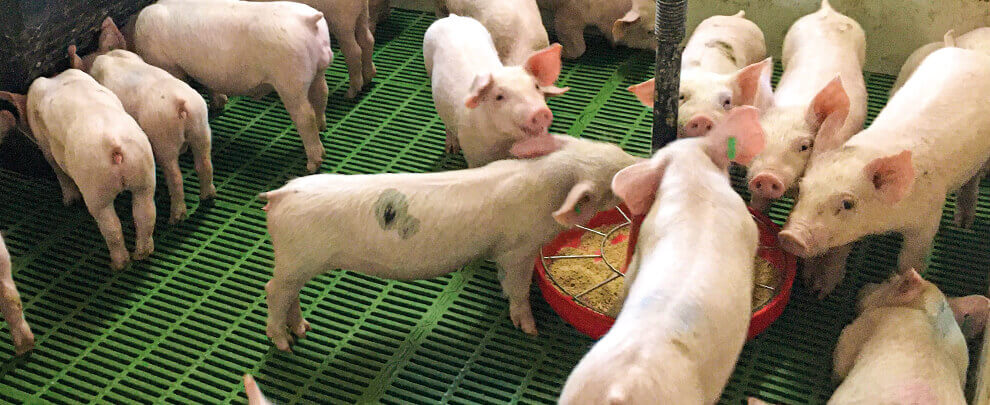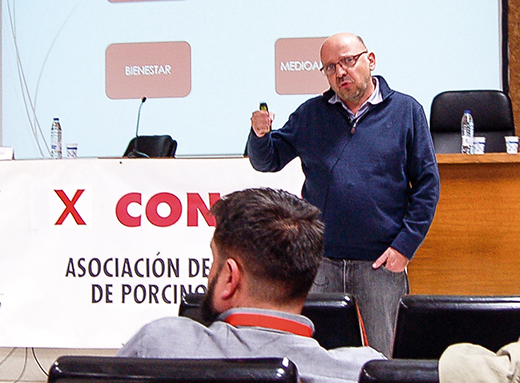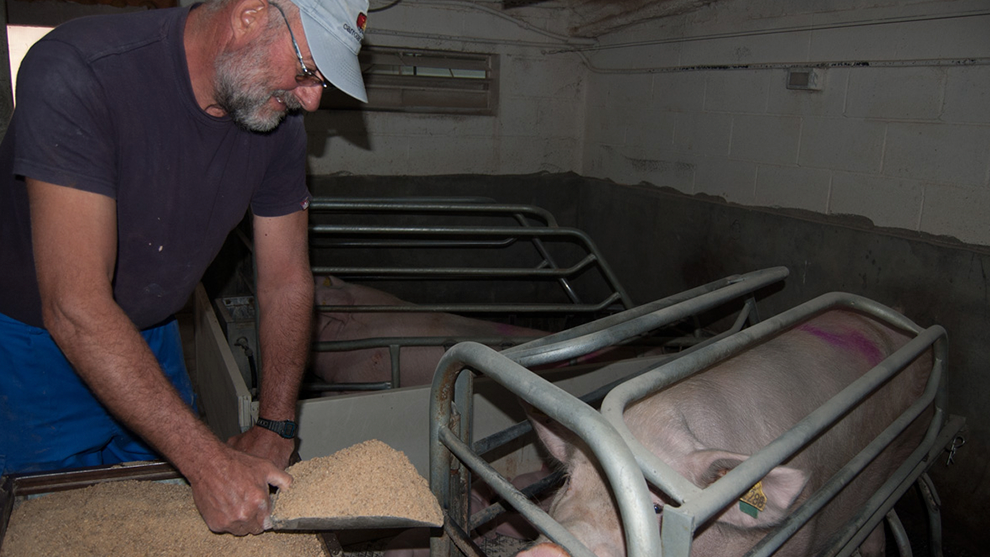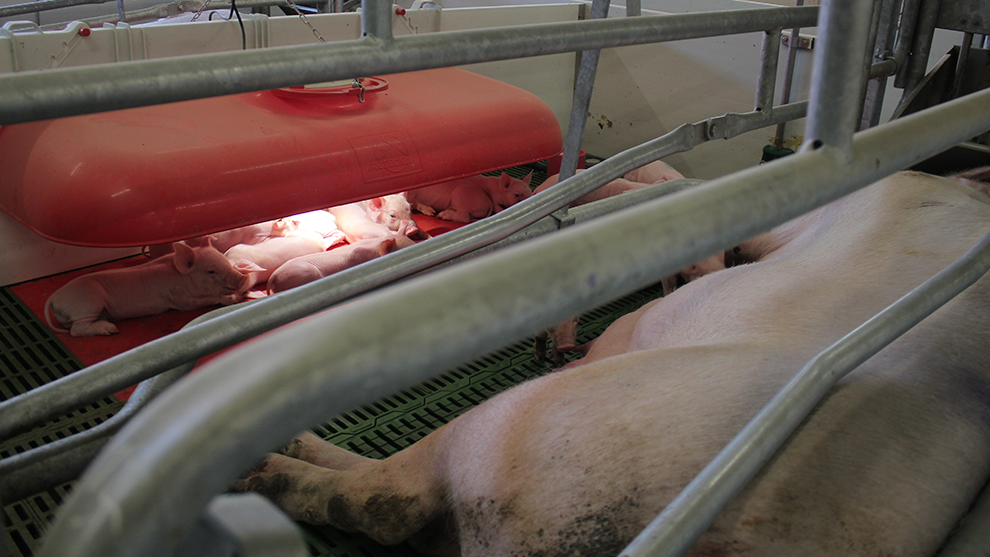Blog
Blog

Keys to being among the best farms
12th February 2019 - News
In a growing sector, with increasingly prolific genetics, in which health is essential to guarantee the future, there are important differences between farms. Productivity and costs are two basic factors to assess whether a farm is doing things right. But what are the keys to being among the best? We spoke with Joan Wennberg, a veterinary consultant, to learn the six keys to being a model farm.

Joan Wennberg. Photo: Rotecna.
As Wennberg assures, “there is not a single piece of data that determines if a farm is among the best, but rather there are several, such as the number of piglets born, the total production figures, the costs of the farm, the benefits…. There is no single pattern. However, to be among the best farms, obviously, the production of a farm must be high (within the possibilities of each genetic) and low costs (below average)”. From his experience, Wennberg lists the six key factors that the best farms meet:
1. STAFF
"Having a trained and motivated staff is essential to become a high production farm," says Wennberg, adding: "A farm is the people who work on it." In this sense, it indicates that, on the one hand, the staff must have previous training, theoretical or theoretical-practical, to have some knowledge about the animals, basic management concepts, etc., and then, from the same farm, they must provide employees with specific training on its operation and the work to be carried out.
On the other hand, at the head of the staff, we have the person in charge, a basic figure, especially at a time like the present, with increasingly larger farms. "The manager is responsible for assigning jobs, organizing tasks, motivating employees, supervising their work...", lists Wennberg. In addition, he is a two-way figure, acting as a link between the farm owner and the workers, and between the technicians who visit the facilities and the workers. The manager is in the center and must organize the day-to-day of the farm.

Employees must be provided with specific training on the work and operation of the farm. Photo: Rotecna.
2. ORGANIZATION
“When we talk about the organization of work on the farm, we are referring to working in an orderly and efficient manner, that priorities are clear but, at the same time, there is time to attend to details”, explains Wennberg. To understand it better, according to Wennberg, "we can determine if a farm is well organized if, in the different tasks, the manager and the staff can answer three questions: who?, how? and when?". The how refers to the way things are done on a farm, the who to the person or persons responsible for carrying out each job, and the when to the time and periodicity of the tasks.
"An organized farm is one in which, if the manager is absent for three days, nothing happens"
3. HANDLING
Management directly depends on the two previous factors. If we have a trained and motivated staff, and the farm is organized, surely the management will be correct. “Although any management practice that is carried out in the different areas of the farm is important, my experience indicates that, at present, there are some phases of the production process in which the differences between high-production farms and farms are determined. those that are not”, explains Wennberg. This is the case, for example, of the preparation for the first mating, a point at which success lies in some highly advisable practices, such as correctly carrying out a sanitary adaptation to avoid the entry of any problem into the farm, adapting the sow to the health of the farm, control a previous heat before the insemination, establish a period of 15 days of adaptation to the cages where the insemination is carried out and carry out adequate overfeeding (flushing) of the future breeders to achieve better ovulation.
In the case of farrowing, there are many management differences, especially on farms that work with high prolificacy genetics, but there are three factors that must be met: correctly assisted farrowing, with regular control every 30 minutes, exquisite control of the environment (temperature) where the piglets are during the first 48 hours of life, and ensure that all take colostrum, with special attention to those piglets with difficulties.
4. HEALTH
“Health is essential. If you work well and the people are trained, but you have disease outbreaks very often, you will never be a high-production farm”, warns Wennberg. To achieve a good health status, it is essential to protect the farm, and this is achieved by investing in external biosecurity, to prevent the spread of diseases from abroad, and in internal biosecurity, so that the diseases that you already have under control do as little harm as possible. In biosecurity, the training of personnel is very important, so that they understand the reason for the measures adopted and their importance, in order to ensure that they are complied with and maintained over time.
On the other hand, if a farm is starting from scratch, it is important to invest in buying healthy animals, free of as many diseases as possible.

In farrowing, it is important to carry out exquisite control of the environment where the piglets are. Photo: Rotecna.
5. FEED
"The key to feeding, beyond the nutritional formulas of the feed that are already correct from the factory, lies in the fact that the food is supplied adequately, according to the needs of the animals in each phase," says Wennberg. In this way, about the food we would talk about two aspects: nutritional, which feed mills comply with, and practical feeding, which falls within the management of the farm, and consists of how the animals are fed so that they have a correct body condition.
In this sense, Wennberg points out the importance of maintaining a good body condition of the sows at times such as farrowing, which informs us if we have fed the sow well during the first month of gestation, which will tell us if we have recovered the sows and if we have taken advantage of this period to equalize their body condition, and at the entrance to the farrowing room, a key aspect to achieving a good farrowing and lactation. "Feeding in the farrowing house is an art," says Wennberg, although all the techniques pursue the same objective: gradually increase the feed intake of the sows, identifying those that can eat and those that cannot, and stimulate the consumption of water, with the aim of achieving consumption of 8-10 kilos of feed in the second half of the lactation period.
6. FACILITIES
The concept of facilities is very broad, therefore, in general terms, Wennberg concentrates his vision on three areas; the existence of an adequate quarantine ship, maternity conditions, and environmental control. “These are the points where I think there are a lot of failures and there are more differences between farms. In addition, they are aspects that, in the best farms, are taken into account and worked well”, he explains.
Thus, in quarantine, given its direct relationship with the health of the farm, a farm cannot be healthy or have a high production if the replacement does not work correctly. "The biggest entry point for diseases on the farm are the breeders, which is why it is important to buy healthy animals, comply with the quarantine periods and invest in adapting future breeders," lists Wennberg. In quarantine it is also recommended to have this house as far as possible from the farm and, above all, have enough space to have at least two months of quarantine adaptation.
In farrowing, modern genetics require a minimum of space and facilities, and a certain handling capacity to be able to wean many piglets and reduce the risk of crushing. Narrow farrowing places (with a width of less than 1.80 m), small thermal plates, and the absence of cages with anti-crush systems... are clearly limiting factors.
Finally, in terms of environmental control, it is essential to have the necessary facilities and equipment to cope with increasingly longer and hotter summer months. “Without adequate ventilation and cooling systems in pregnancy and maternity, three months of summer can sink many months of work”, says Joan.
In conclusion, according to Wennberg, the producers have all the necessary tools and knowledge to be among the best farms: “All that we expose are practices known to all. The secret of the best farms is not that they know more, but that they work better and how each farmer overcomes the limitations of his farm.”






